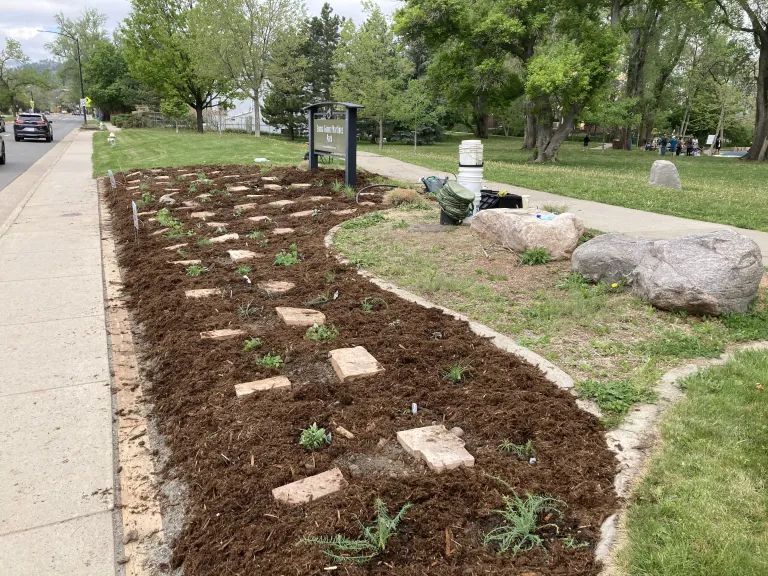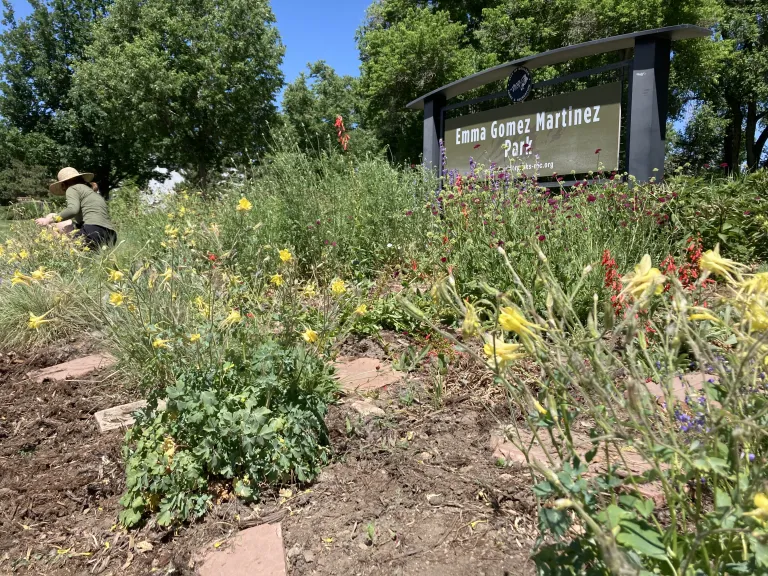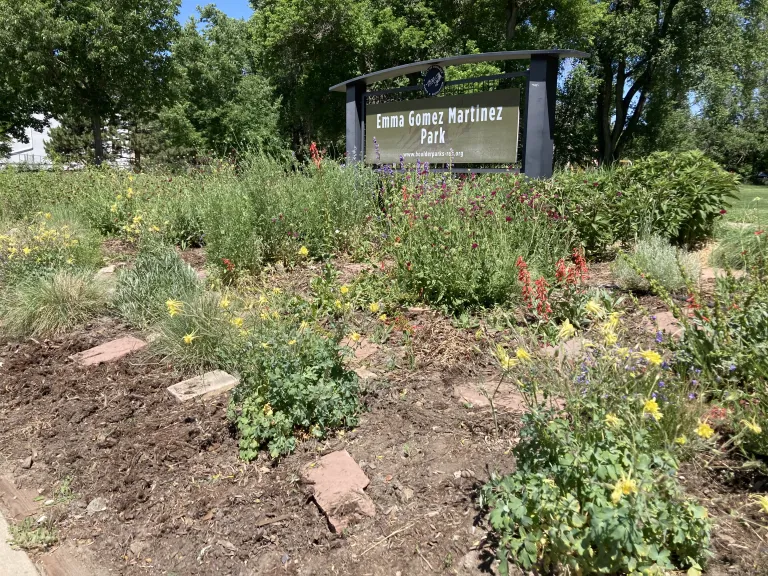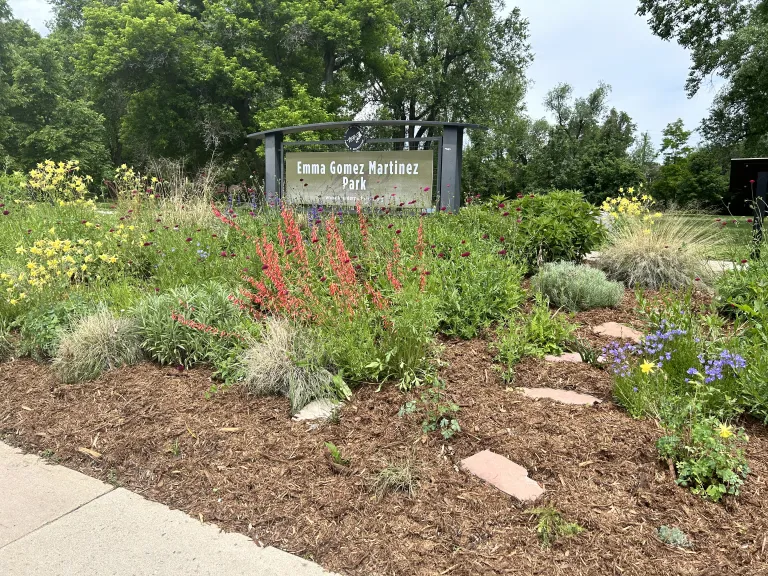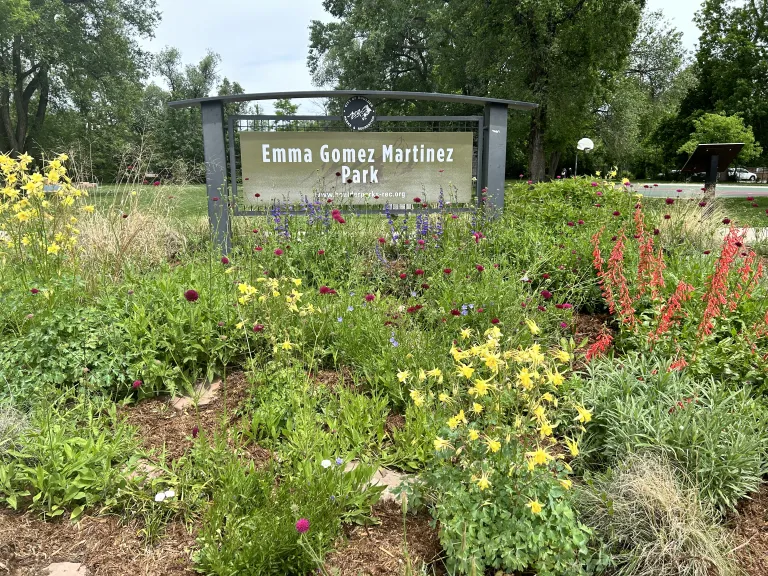Water conservation is responsible water stewardship. It is defined as a beneficial reduction in water use, waste of water and water loss. This project will support all the policies, programs and practices designed to help people change their behaviors and become champions of water efficiency.
Reducing Water Usage in Boulder
The Water Conservation Program supports city water customers to use water more efficiently, eliminate leaks, reduce water costs and support sustainability.
Supporting Water Conservation
The city provides drinking water to approximately 120,000 residents and numerous businesses. Our long-term community goals for water conservation include encouraging responsible water stewardship by using water efficiently, recognizing and preventing water waste, and increasing the general understanding of the value of water. We partner with Resource Central and other local organizations to offer community members water conservation opportunities, including:
- Resource Central's Slow the Flow landscape irrigation audits: Irrigation audits are designed to help identify water waste and provide feedback on how to optimize outdoor irrigation equipment. Resource Central’s irrigation audits are offered free of charge to city customers, while supplies last.
- Resource Central’s Lawn Replacement Program: This program helps community members replace at least 200 square feet of turf with water-wise gardens. Beautify your yard, conserve water and save money on your water bill! We have received funds through HB-1151 to support additional lawn replacement within the community and offer up to $500 in discounts towards your landscape conversion while supplies last.
- Resource Central’s Waterwise Yard Seminars: Learn more about conserving water through waterwise yards and get your landscaping questions answered at these free, online seminars.
- Resource Central’s Garden-in-a-Box program: This program offers professionally designed, waterwise, perennial garden kits tailor-made for Colorado yards. Boulder community members who are currently enrolled in the Food Tax Rebate are eligible to receive a $100 discount on a Garden-in-a-Box kit. Interested income-qualified individuals should reach out to bouldersaveswater@bouldercolorado.gov for more information.
Commercial installation of faucet aerators/pre-rinse spray valves. A water-efficient business plays a vital role in conservation and stormwater protection.
Waterwise Landscapes
Learn how to start a landscape transformation and get inspired by others waterwise landscape designs and stories:
- Waterwise Landscape Yards: Resource Central has developed an inspiration hub for neighbors to share their waterwise landscape design and concepts. Browse other community members’ garden designs and stories, or share your waterwise project for others!
- Colorado Stormwater Center Rain Garden Layouts: The Colorado Stormwater Center has nine rain garden planting designs you can browse to see if a design would work for your lawn.
- Northern Water's Sustainable Landscape Templates: These landscapes are designed to be both waterwise and firewise.
- Local waterwise demonstration gardens: There are three city demonstration gardens, located at the East Boulder Recreation Center, North Boulder Recreation Center, and Emma Gomez Park. Visit one of those gardens to see various pollinator plants in action!
In the past, we have asked one thing of our gardens; that they be pretty. Now they have to support life, sequester carbon, feed pollinators and manage water.
- Doug TallamyMedia Gallery
Did You Know?
Nearly one trillion gallons of water are wasted each year in U.S. homes in preventable ways. The average household leaks almost 10,000 gallons of water per year, or the amount of water it takes to wash 300 loads of laundry.
Many common household leaks are quick to find and easy to fix. In just 10 minutes, you can search your home for leaks that lead to water waste.
Find a Water Leak
In the Home
-
Toilets
Listen for running water and conduct the food coloring test. Put a few drops of food coloring into the tank at the back of your toilet and let it sit for 10 minutes. If color shows up in the bowl, you have a leak.
-
Sinks
Look and listen for drips from the faucets or in the pipes under the sink.
Check for pooling water under pipes and rust around joints and edges.
-
Showerheads
Look for a dripping showerhead and replace with a new one, if needed.
-
Bathtub
Turn on the tub, then divert the water to the shower and see if there’s still a lot of water coming from the tub; that could mean the tub spout diverter needs replacing.
-
Clothes washer or dishwasher
Look for pooling of water under pipe connections, rust or other signs of leakage.
Outside the Home
The City of Boulder provides free irrigation consultations through Resource Central that can help you identify obvious leaks in your irrigation system.
-
Spigot
Ensure tight connections with the hose and see if the hose washer need replacing.
-
Irrigation system
Check for broken sprinklers or nozzles spraying in the wrong direction.
How to Fix a Leak
- WaterSense Fix a Leak website has many helpful video links that show how to fix these simple leaks.
- If you cannot find a leak, or are having troubles fixing one, contact a certified plumber.
Request a Water Leak Adjustment
- Once you have fixed the leak using the steps above, you may be elligible for a water leak adjustment.
- Fill out the Water Leak Adjustment Request form to see if you are elligible.
- We will respond to requests in the order they were received.
Indoor Water Saving Tips
There are many small ways to reduce your water use inside.
- Don't let the water run while you're brushing your teeth or washing your hands.
- Scrape dirty dishes into the compost or trash instead of prewashing - this could save a much as 10 gallons per load or >1,200 gallons of water per year!
- Only run your clothes and dishwasher when full.
- Upgrade your toilets and other water appliances to water efficient models.
Outdoor Watering Saving Tips
There are many ways to reduce outdoor water use such as converting existing landscapes with plants that don't require as much water.

Don't turn on the sprinklers too early in the season. Leaving lawns dormant longer will save water, and will not compromise the longevity of your lawn. April is too early to go automatic, plan on programming your sprinkler system to start in May or June. Hand-water trees and plants as needed - trees offer many benefits such as shade and habitat, and are often greatly impacted by drought, so keep an eye on the health of your trees and water them when needed.

Check with your water supplier for water use rules. Watering twice a week will make grass roots grow deeper and allow the grass to last longer without water. Cycling sprinkler system run times can prevent excess water runoff; visual inspections after an initial watering cycle will make this apparent. An example of a better watering schedule is setting each zone to water for five minutes then wait an hour, water for five minutes again, wait one more hour, then water for a final five minutes. This breaks up the 15 minutes of watering into three cycles, allowing the water to have time to absorb into dense and compact soils.

Watering landscapes in the early morning or at night will help reduce water loss. During the daytime heat, less water will be available to plants due to loss from evaporation and wind. Please check your local water provider for current water restrictions, including watering hours.

Watch the weather and adjust watering days and times accordingly. Use soil moisture sensors or rain sensors to automatically adjust watering schedules when it rains. Consider installing a WaterSense Smart Irrigation Controller. Check with your water supplier for potential rebates on irrigation equipment and other opportunities.

Raise lawn mower blades and protect lawns from heat by letting grass grow longer (3 - 3.5 inches). A taller lawn provides shade to the roots and helps retain soil moisture, so your lawn requires less water.

Check to see if your irrigation heads are broken, tilted or not set-up properly by scheduling an irrigation assessment. Sweep driveways and sidewalks with a broom instead of spraying with a hose - but please not down the storm drain or into the street gutter. Use hand-watering, deep root water, or drip irrigation for trees, shrubs, bushes, perennial beds, annual flowers and vegetable gardens. Always use a shut-off nozzle on your hose when watering plants.

Check your sprinkler system monthly for broken sprinkler heads and damaged irrigation lines. Hire a professional to conduct a sprinkler assessment - check with your water supplier, many have low cost or no cost sprinkler assessment programs for their community. A well maintained system will save both money and water.

If possible, delay new lawn installations for a non-drought year and avoid planting during the mid-summer heat. If you've already purchased a water wise garden this year, plant early in the morning or evening in May. Incorporate water wise plants and turf when planning landscape renovations or installations.
Know Your Outdoor Water Allotment
Do you set your irrigation system at the beginning of each season and then 'forget' about it until it's time to turn it off in the fall? Don't Set It And Forget It!
Conservation Resources
- Yard and Garden Tips on Colorado State University Extension's website has great tips and resources for any type of landscape.
- Colorado Native Grass Guide - One of the best sustainable, functional and waterwise groundcovers for Colorado.
- Rain Barrels - As of 2016, rain barrels are legal in Colorado
- Maximum of two rain barrels with a combined capacity of 110 gallons.
- Permitted on single family or small multifamily (less than 4 units) properties.
- Use sealable lid and screens to help prevent mosquito breeding and address water quality concerns.
- Water collected from roofs can only be used for outdoor purposes.
- Untreated rainwater is not safe to drink. Monthly draining is recommended.
Save Water in the Workplace
Join PACE
The Water Conservation Program partners with the county's Partners for a Clean Environment (PACE) Program to provide commercial customers with free water and energy services. At PACE, a business sustainability consultant can:
- Conduct a free water assessment at your business.
- Identify quick upgrades, such as installing low-flow fixtures.
- Connect you with tools, incentives and other resources.
- Engage employees in efforts to reduce water use.
Visit the PACE website or call 303-786-7223 to learn more.
Audit Your Water Usage
Want to perform a self-evaluation at your property?
- Try the free CII Water Audit Tool.
Work with EnergySmart
EnergySmart helps you:
- Discover low- and no-cost energy-saving opportunities. Schedule a FREE EnergySmart Assessment for your business.
- Upgrade your old or inefficient equipment. With EnergySmart advisors, incentives and utility rebates, energy efficiency upgrades have never been more cost-effective.
Get started saving today:
- Call an expert Energy Advisor at 303-441-1300
- Email: signupBIZ@EnergySmartYES.com
- Visit: www.EnergySmartYES.com
Conservation Tips for Businesses
Restaurants should only serve water when asked, not as a default practice.
Have your system checked regularly (at least 2x per month) and repair any identified leaks.
Take the time to bring awareness to your employees. Don't just assume everyone knows the best practices when it comes to water conservation and efficiency measures.
Use one glass per employee per day to reduce the number of dishes needing to be washed. Or better yet, offer your new employees a reusable water bottle to keep at work for their use.
Install toilet dams or a displacement device to cut down on the amount of water needed for each flush. Place an inch or two of sand or pebbles into a quart-sized container and fill the rest of the container with water. Put the cap on the container and place it in the toilet's tank, safely away from the operating mechanism. The container will save on each flush without impairing the efficiency of the toilet.
Make sure your toilets are leak-free. Put a few drops of food coloring in the toilet's tank. Wait 10-15 mins. If the coloring appears in the bowl without flushing, you have a leak and it should be repaired immediately. Even a small leak can waste thousands of gallons of water per year. Remember, you don't necessarily need to hear running water to have a leak.
Replace old fixtures with current, water-wise fixtures. The EPA defines a water sense fixture as one that uses two gallons or less of water per minute. Older fixtures can use as much as 10 gallons per minute.
Don't use or install ornamental water features unless they recycle water. If you do have one, place it in a shady spot (if possible) to reduce the rate of evaporation.
Start a conservation program at your place of business with clear goals that can be measured. Revisit your goals on an annual basis.
It is important to know how much water is being used for your industrial processes and/or domestic needs. Monitor your water bills to see how you're doing. Understand what your water allotment is and how well you are staying within your water budget each month.
Get your business certified! Partners for a Clean Environment (PACE) recognizes businesses that implement conservation best practices.

